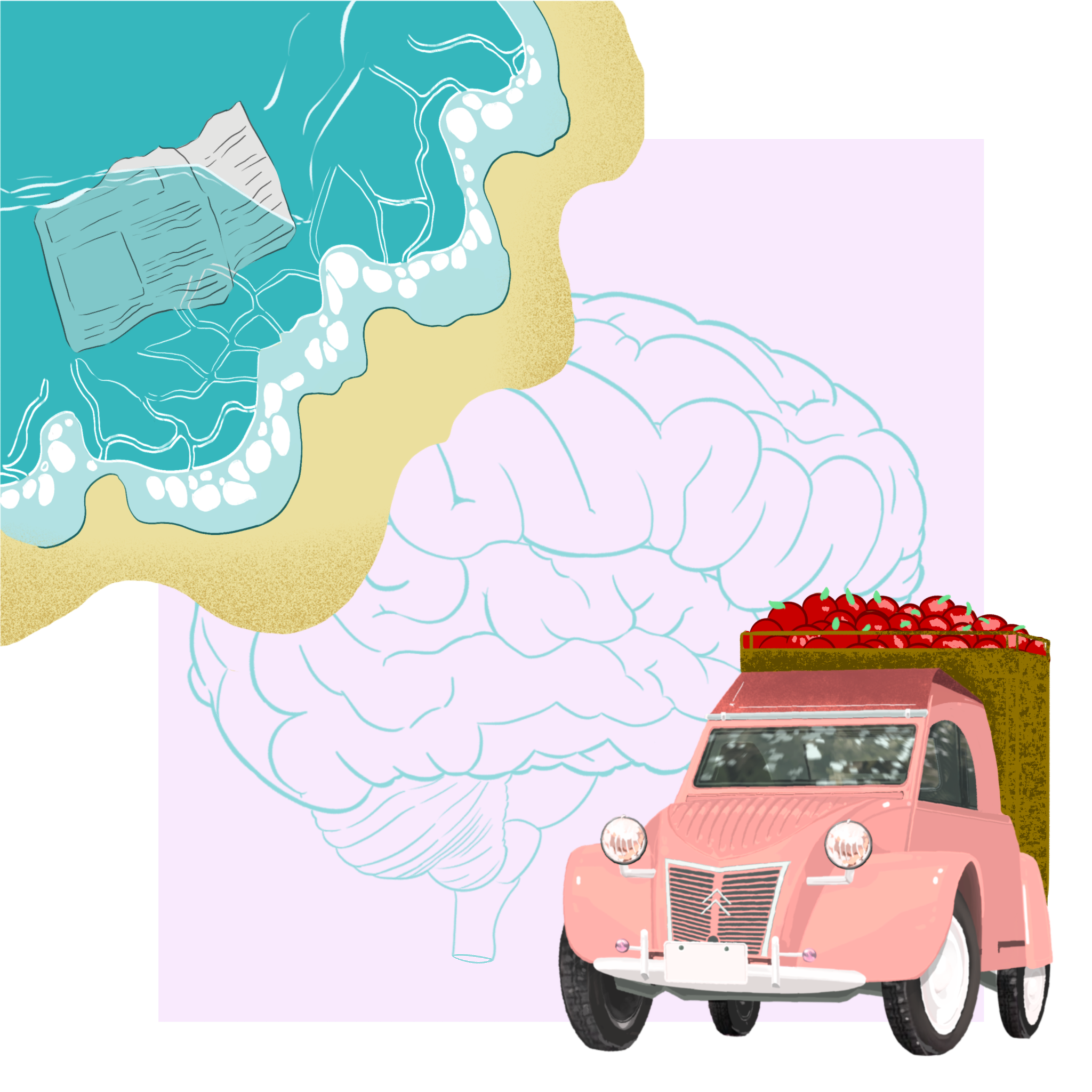21 Association Activity 2
Activity #A2: Dual Coding
In this demonstration, you will see 14 pairs of words, each containing a STIMULUS and a RESPONSE. Try to remember the pairs of words so that later, when you see the STIMULUS word, you’ll remember the RESPONSE word. Use whatever techniques you can think of to recall each pair of words. You’ll have 5 seconds to see each pair.
How did you do when trying to remember the word pair? If you are like most people, you remembered words that cognitive psychologists refer to as “concrete” words. These are words that have a visual representation of the others, which are more abstract. Let’s test your recall with the activity below:
It is likely that you recalled word pairings that had two visual words like “Ocean-Newspaper” and “Truck-Apple” because they are common and highly visual. Like in the image seen here, you are able to easily create a mental representation of these types of concrete images. This is less likely to be true for word pairings like, “Judgement-Concern” and “Reason-Freedom.”

It is likely that you recalled word pairings that had two visual words like “Ocean-Newspaper” and “Truck-Apple” because they are common and highly visual. Like in the image seen here, you are able to easily create a mental representation of these types of concrete images. This is less likely to be true for word pairings like, “Judgement-Concern” and “Reason-Freedom.”
Many people consider themselves to be “visual learners.” While committing to specific learning styles in education does not lead to the best learning, it is true that when we use visual information while learning, it creates something called a dual-code. Cognitive Psychologist Allan Paivio demonstrated that concrete word pairs were better remembered because our memory is enhanced by visual information. The “dual-code” or “two-code” aspect of remembering means that any chance we get to use more than one sensory feature (in Paivio’s case, visual with the verbal word) can enhance our memory. You already knew this, though, as multiple coding is the basis for ELABORATON!
References: Clark, J. M. & Paivio, A. (1991). Dual coding theory and education. Educational Psychology Review, 3(3), 149-170.
Paivio, A. (1971). Imagery and Verbal Processes. New York: Holt, Rinehart & Winston.
A great historical example of the benefits of visual information in memory is a mnemonic tool called “method of loci” or (MOL). Loci is the plural word for “locus,” which means place. Humans have been using the MOL, which involves taking a familiar location (like your house/apartment) and doing a mental walk through it as you attempt to remember a series of information. Let’s say you need the following items at the grocery store, and you want to practice training your memory: Bread, milk, oatmeal, sugar, apples, eggs, peanut butter, chicken, yogurt, and carrots. Using the MOL, you would place an item along a mental walk through your home (e.g., bread is just the right size to sit in the loaf-size mailbox outside your front door, you open the front door and find a giant-oversized gallon of milk is spilling down the stairs, pooling into the entry-way of your home, you turn right and on top of a side table is an oatmeal container. You tip the container into the entryway so that is helps to soak up all the milk).
Is this easy? Not exactly, and it does take some work, but the more imaginative and creative you can get with storing images in a familiar location (that is to ASSOCIATE) it will be hard to forget the items on your grocery list! (at least until you must make a new list).
Journalist and former US. Memory Champion Joshua Foer demonstrates his version of the MOL here: YouTube. (2015, December 7). This guy can teach you how to memorize anything. YouTube.
